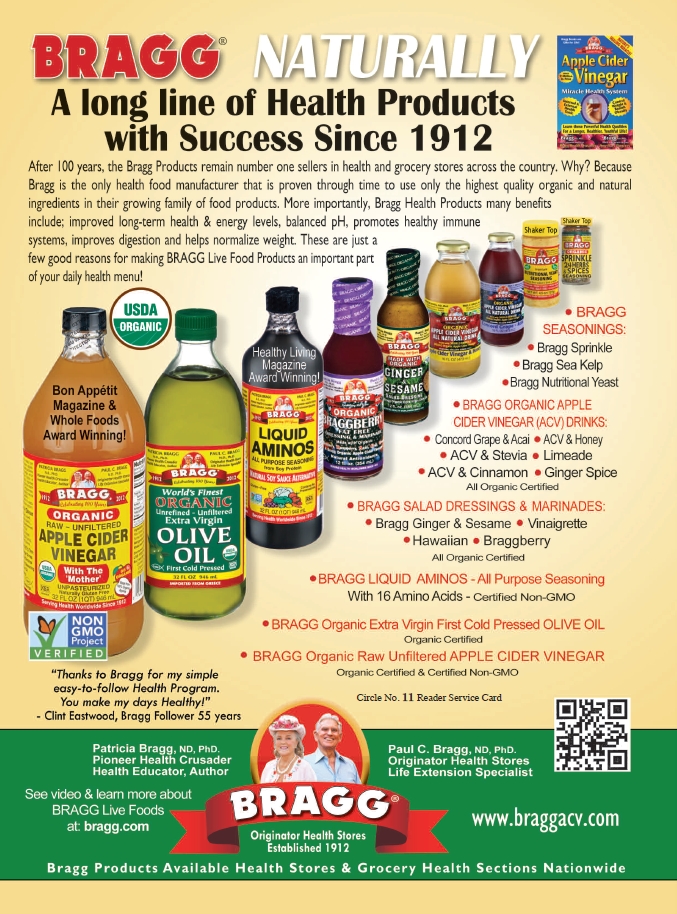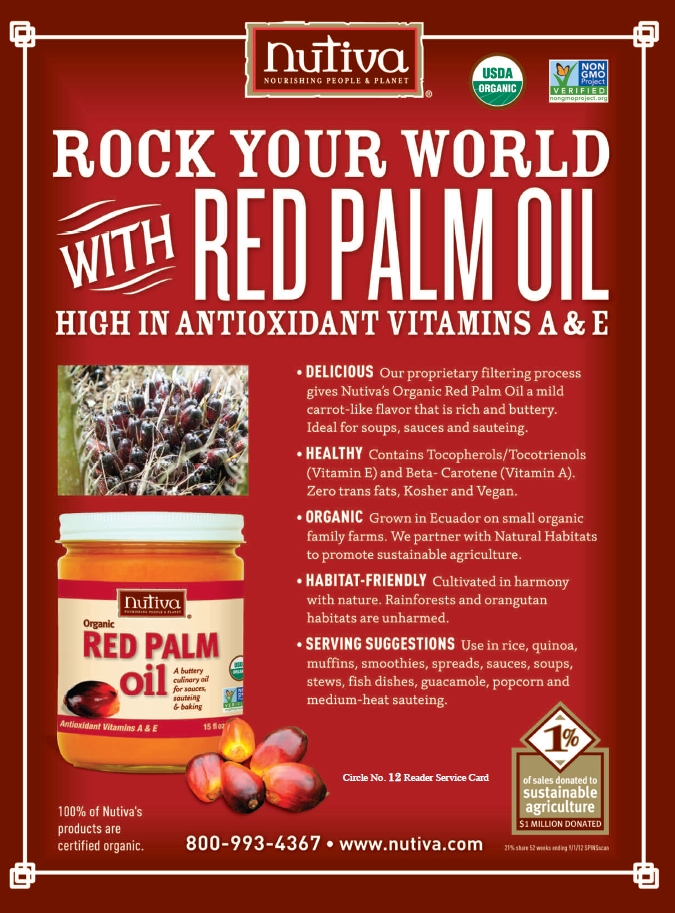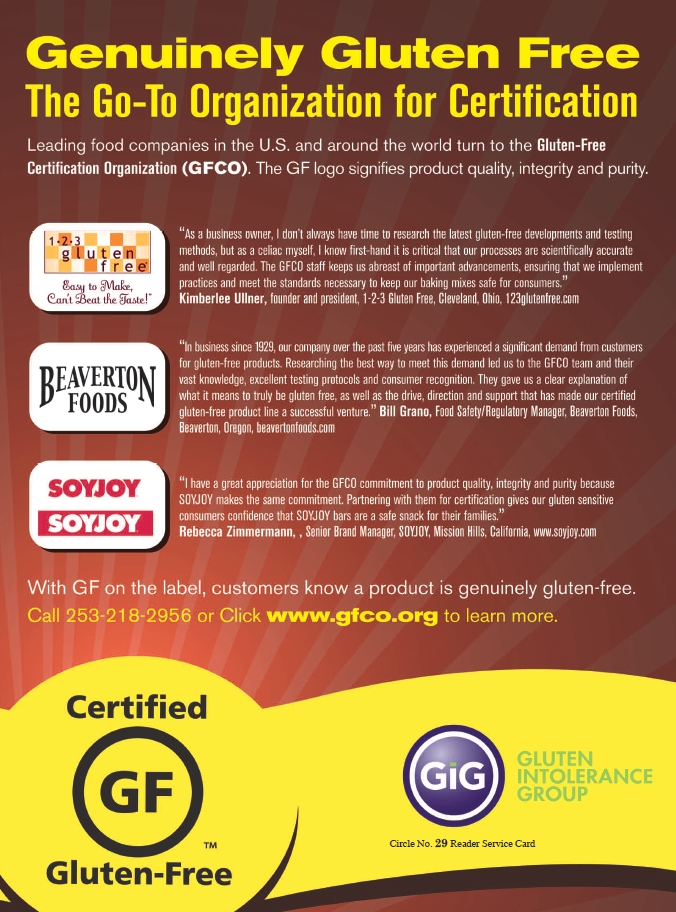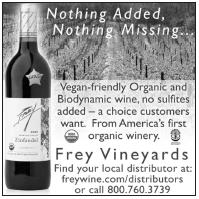Within the ever evolving tale of organics, there are many sub-narratives. Some are topics that prove contentious, some complex and some confounding. But they are always intriguing, and to those who care deeply about the organic food industry and its future, they are all highly important stories to tell. Depending on the particular issue and on who you hear tell it, either the industry needs to get on the same page, the adversaries of organic need to be challenged, or, most commonly, the consuming public needs to be made more aware. Here are a few of the most pressing matters in the minds of leading organic groups and voices.
The Benefits of Organic
With any nuanced subject, there is perception, and then there is reality. But at least among consumers, the perception of organic food products is an increasingly positive one. The Organic Trade Association (OTA) has released its 2013 U.S. Families’ Organic Attitudes and Beliefs Study, which reveals that nearly half (48%) of consumers who purchase organic said they do so because they are “healthier for me and my children.” Parental desire to avoid toxic and persistent pesticides and fertilizers (30%), antibiotics and growth hormones (29%) and genetically modified organisms (22%) were all popular reasons for organic purchasing habits, according to OTA.
So, clearly, a health-based distinction  between organic and non-organic agriculture is a key driver of consumer interest. Organic is, indeed, the deciding factor in many purchases. Ryan Black, CEO and cofounder of Sambazon, San Clemente, CA, says that thirteen years ago his company was a pioneer in getting açaí products organically certified. Now, the company’s research indicates that 65% of its customers cite organic as a major reason for purchase.
between organic and non-organic agriculture is a key driver of consumer interest. Organic is, indeed, the deciding factor in many purchases. Ryan Black, CEO and cofounder of Sambazon, San Clemente, CA, says that thirteen years ago his company was a pioneer in getting açaí products organically certified. Now, the company’s research indicates that 65% of its customers cite organic as a major reason for purchase.
But what are the actual, concrete advantages that organic possesses? “The main benefits, to put it simply, are that organically produced foods are better for you and better for the planet,” says Alan Murray, CEO of GoodBelly, Boulder, CO. The specifics, however, are complex and often controversial, according to George Siemon, CEO of Organic Valley, La Farge, WI. “It’s always a tough issue to talk about the benefits of organic, because inevitably you can get into a bottomless debate about science. And science seems to be handy. People seem to be able to prove anything they want on both sides of the fence,” he says.
Studies, like the widely-reported Stanford study for instance, that come to the conclusion that organic food products are nutritionally equivalent to conventional foods make at least one serious mistake, according to Simcha Weinstein, director of marketing at Albert’s Organics, Bridgeport, NJ: organics see no chemical fertilizer or pesticide use throughout the growing cycle. Weinstein says, “Technically, this is not considered part of the nutritional content of the food, however, in the minds of consumers, when it is reported that organic and conventionally raised foods have the same nutritional value, what that implies, and what the consumer hears, is that one is no more healthy than the other.” So, he feels, the wrong message ends up getting received.
Indeed, the fundamental distinction that organic supporters typically make concerns what’s not in organic foods. Ken Whitman, president of Natural Vitality, Austin, TX, points out that truly organic foods do not contain genetically modified organisms (GMOs) or pesticide residues. He encourages people to visit www.whatsonmyfood.org for an eye-opening experience, saying, “I think you’ll have a greater appreciation of organics as a result.”
Siemon emphasizes the active public relations campaign to discredit organics being undertaken by many parties, starting with the chemical and biotechnology community. The organic industry has become too “uppity,” he says, meaning it’s made too much progress and gained too much of a voice for those who would oppose it to remain comfortable. His company, meanwhile, has been well-positioned to observe those qualities that set organic apart. Siemon says they find that organic standards have dramatic benefits for the health and productivity of dairy animals, including the nutritional content of their milk.
A recent study, cited by Mary Waldner, cofounder and chairman of Mary’s Gone Crackers, Gridley, CA, found that fruit flies fed organic produce were more fertile and lived longer than those fed conventional (1). Other recent reports show higher levels of antioxidant and better nutrient density in organic foods, according to Matt McLean, CEO and founder of Uncle Matt’s Organic, Inc., Clermont, FL. “For our educational purposes, we try to highlight this fact via social media, packaging and messaging, as well as in our grove tours,” he says.
 Much of this type of information is just starting to come to light, explains John Foster, director of compliance, quality, food safety and organic integrity at Earthbound Farm, San Juan Bautista, CA. “It took many years to get such research funded in the first place, but the trend is quite clear that there are demonstrable benefits in environmental quality, economic viability, and consumer protection when comparing organic and conventional programs and systems,” Foster says.
Much of this type of information is just starting to come to light, explains John Foster, director of compliance, quality, food safety and organic integrity at Earthbound Farm, San Juan Bautista, CA. “It took many years to get such research funded in the first place, but the trend is quite clear that there are demonstrable benefits in environmental quality, economic viability, and consumer protection when comparing organic and conventional programs and systems,” Foster says.
It does not take a pile of researchers, says Coach Mark Smallwood, executive director of the Rodale Institute, to tell us about some of the negatives associated with non-organic agriculture. More than 17,000 pesticide products are currently on the market, and “exposure to these chemicals has been linked to central nervous system disruption, infertility, a multitude of cancers and even changes to our DNA,” says Smallwood.
He also points to the spreading of human sewage on industrial farm fields. Smallwood stresses that biosolids contain pathogens, heavy metals, flame retardants, pharmaceutical drugs…you name it. “Anything that goes down our collective drains—from medicine flushed down the toilet to paint brushes washed in the sink to industrial contaminates hosed off a warehouse floor—ends up in our wastewater treatment plants and then on our farms,” he says.
Likewise, Smallwood feels common sense tells us that designing farms so crops can better resist pest and disease naturally is a good thing. “Rather than killing a mosquito with an atom bomb, organic farmers start with good design, crop rotation, trap crops, pheromone lures, barriers and other low-impact methods of pest-control,” he says.
Emphasizing the biodiversity engendered by organic is also important. The recovery of heritage and heirloom varieties of vegetables, grains and animals adds to the resilience of our food system, Smallwood says. There is also, he notes, the benefit to the soil that organic can offer, achieved through means such as natural compost, and cover crops that enrich the soil instead of being harvested.
Companies dedicated to these principles are all about spreading the word. “We educate consumers about the benefits of organic in everything we do; as a company that is always organic, it’s an expression of our values. You will see this communicated on our packaging, our website, our social media tools, our PR and advertising communication and everywhere you find the brand. When conveying the benefits, we try to understand what each audience may value and tailor our communication that way,” says Arjan Stephens, executive vice president of sales and marketing at Nature’s Path.
Organic and GMOs
The dovetailing of standards and principles between the organic community and the movement against genetically modified organisms (GMOs) is not surprising, since many of the same people and organizations are leaders in both areas. Thoughts on the subject, therefore, are not hard to elicit. “In my mind the biggest issue with GMO seeds is that we are in the process of watching a few companies (mostly one) take control of our food supply, and that is incredibly dangerous,” says Weinstein.
The companies, particularly Monsanto, who  make the modified seed also own the rights to the technology, and require farmers to sign agreements at purchase that prohibit them from saving and replanting the seeds. Between 1997 and April 2010, Monsanto filed 144 lawsuits against farmers in at least 27 states for alleged infringement of its transgenic seed patents or for breach of license to those patents, according to Weinstein.
make the modified seed also own the rights to the technology, and require farmers to sign agreements at purchase that prohibit them from saving and replanting the seeds. Between 1997 and April 2010, Monsanto filed 144 lawsuits against farmers in at least 27 states for alleged infringement of its transgenic seed patents or for breach of license to those patents, according to Weinstein.
Positioning genetic modification and organic as philosophical opposites, Siemon says, “A little thing makes a big difference sometimes. The idea that you’re going to splice in a gene, or the idea that you can use Roundup [herbicide] endlessly, and not see some effect, is just contrary to what organics believes.”
Pointing also to the proliferation of GMO crops that are actually engineered to produce pesticides within their own cells, Smallwood says, “Through the magic of genetic engineering, we now grow food crops (broccoli, potatoes, corn, rice and more) that don’t just have pesticides on them, but pesticides actually in them.”
Siemon calls GMOs a very bold venture, but one that unfortunately is all about trademarking and patenting genes, and pursuing profit on the part of investors and companies. The debate over their necessity and safety has not been an honest conversation, he feels, but a bought and sold one. Unbalanced press coverage and regulations, along with university research funded by biotechnology companies, are hallmarks of the GMO era for Siemon. The last two years have been about the public’s awakening to the issue, he argues, while noting that the United States lags behind Europe on GMO awareness and regulation.
The organic community has developed various stances on the issue. The OTA, for starters, has officially called for a moratorium on all GMO use in agriculture, citing the need for more independent research and regulation before GMOs should be allowed in the food system. OTA refers to increasing scientific evidence that GMO crops can cause both environmental and health issues.
Until that goal of a moratorium pending further study is reached, OTA is also officially supporting mandatory labeling of all agricultural GMOs and their products. Like many in the industry, McLean points to his company’s support of the various GMO labeling movements, from the national Just Label It campaign to state petitions. With the introduction of federal GMO labeling legislation to the current Congress, this is the issue on which most activism and debate is now focused.
In the meantime, a burgeoning market for Non-GMO Project verified products has sprung up. These products are independently tested to ensure they meet the Non-GMO Project standard for the absence of GMOs. The other way consumers are often encouraged to seek GMO-free food is through U.S. Department of Agriculture (USDA) certified organic products. Certified organic products, as many know, cannot be produced with genetically modified inputs under National Organic Program (NOP) regulations. But USDA certified products are not required to undergo the same testing procedures that Non-GMO Project verified products are.
 This may lead some to wonder whether certified organic’s assurance, that no GMOs were intentionally used in production, will be enough for some consumers seeking to avoid GMOs. Gwendolyn Wyard, OTA’s regulatory director of organic standards and food safety, steps up first to clarify the situation. She starts by noting that the certification process used to evaluate organic operations is quite rigorous when it comes to GMOs. “Furthermore,” she says, “testing is part of the process.”
This may lead some to wonder whether certified organic’s assurance, that no GMOs were intentionally used in production, will be enough for some consumers seeking to avoid GMOs. Gwendolyn Wyard, OTA’s regulatory director of organic standards and food safety, steps up first to clarify the situation. She starts by noting that the certification process used to evaluate organic operations is quite rigorous when it comes to GMOs. “Furthermore,” she says, “testing is part of the process.”
In November 2012, NOP published a final rule clarifying the Organic Foods Production Act requirement for periodic residue testing of organic products by accredited certifiers. It explicitly states that testing may target excluded methods such as genetic engineering. “Further, in January 2012, NOP conducted a training on GM presence in organic products at the annual certifier training followed by another training in January 2013 on responding to positive residues (including GM presence),” Wyard says.
She goes on to say, “While the standards largely focus on the verification of procedures, testing is a tool used regularly to validate contamination prevention measures and/or to address complaints and reported contamination. However, when one considers the proliferation and widespread use of genetically modified crops in agriculture, we recognize that improvements can be made.” This is why OTA is currently focusing its attention on a seed purity standard, as the National Organic Standards Board (NOSB) is requesting feedback from stakeholders on this issue.
Agreeing that seed-oriented standards are the best direction for the industry, Siemon states that he feels organics are a safe place for those seeking to avoid GMOs. Though some worry about cross-contamination between organic and GMO crops, Siemon says this factor is minimal. “What I like about the seed focus is that it’s something you can do preventatively. If you start testing every crop that every farmer puts out, you’ll start punishing organic farmers for what their neighbors did, or what their seed company didn’t do.” Smallwood concurs, saying, “The burden of and responsibility for GMO contamination should be placed firmly at the doorstep of the very producers of those products and not with the organic farmers following the extensive certification regulations diligently.”
Some domestic goods are becoming a lost cause, Smallwood laments, saying, “As an organization that works closely with farmers, we understand that the genie is already out of the box when it comes to GMOs. For example, the Non-GMO Project won’t verify U.S. honey, because they consider it impossible to keep honeybees from GMO pollen in this country.”
Regardless of one’s stance on testing, organic still faces the issue of consumer awareness. While admitting he’s no expert on consumer opinion, Foster says, “Based on my conversations with people outside the organic industry and the comments our consumer affairs team gets, I am not convinced most people understand that organic standards prohibit genetic modification in the production of organic food.”
In any event, Waldner feels that in some cases, greater assurances can’t hurt. “There are certain U.S. crops, such as corn, soy and canola, that have been so heavily altered by GMO seed that I would want food containing those ingredients to undergo further verification or testing,” she says. Whitman also says that the presence of specific non-GMO verification can make a difference. While shopping, he says, “you might see an organic brand, but if there was another organic brand that also featured a Non-GMO Project verification, that says that the issue was specifically addressed. I believe this adds to confidence in the aisle.”
Of course, Stephens reminds us that a good way to avoid GMOs while also enjoying the benefits of organic food is to choose products that bear the USDA seal. He says his company has also enrolled in the Non-GMO Project and completed independent testing, because the feel that both required testing and a definite threshold for GMO acceptance are needed tools.
The National Organic Program
There is much respect given by those within the industry to the work of those who run the organic program in the United States, and to the program itself. Foster, a current member of the NOSB, calls the National List of Allowed and Prohibited Substances in organic the most thoroughly reviewed and vetted list of agricultural inputs in existence. “Bear in mind each one must be allowed by the U.S. Food & Drug Administration (FDA), then on top of that they are closely scrutinized by a very conservative group of people—the NOSB. The vast majority of petitioned materials have failed to be listed in recent years,” he says.
Siemon, who was also involved directly in  these efforts as a former NOSB member, says he is very proud of the process, noting it is the only advisory committee in the United States that has actual regulatory power. He says the five year terms undertaken by these individuals require highly technical work.
these efforts as a former NOSB member, says he is very proud of the process, noting it is the only advisory committee in the United States that has actual regulatory power. He says the five year terms undertaken by these individuals require highly technical work.
He acknowledges the discord that has taken place over the acceptance by NOSB of certain synthetic ingredients to the National List. But he feels that when two political sides develop over these issues, decisions are in danger of being made based on those politics, as opposed to the relevant science or farmers’ needs. No matter what the material in question is, Siemon says a large percentage of manufacturers often agree that it is necessary to add it to the list, but a small minority will always contend they get by without it.
In clarifying the relevance of the National List to organic labeling regulations, Wyard starts by saying that “a product labeled as 100% organic is just that—100% organic.” A product labeled simply as “organic” can, however, contain up to 5% non-organic ingredients by weight or volume. Every ingredient classified in that 5%, for any product, must be on the National List, which means it was petitioned to the NOSB, it underwent a review process that includes two public comment periods, and it was found to meet the criteria specified in the organic regulations. “The National List process allows for some minor ingredients to be used provided they are essential, unavailable in natural or organic form, and they are not toxic to the environment or human health,” Wyard says.
Siemon refers to the fact that every ingredient is given a Sunset review every five years to try to illustrate the integrity of the process. An example of this process at work is the recent denial by NOSB of an extension to the use of tetracycline (an antibiotic) in organic apple and pear cultivation past October 21, 2014 (2). The antibiotic has been used to treat a condition called fire blight that can ravage orchards, but by a 9–6 vote the board chose not to extend its use in organic for another two years.
“When I was on the board, I voted on things that my co-op didn’t agree with, because it was the right decision for the nation as a whole,” Siemon says. He notes that he did not feel he was there to vote in the interests of his company, and that individuals on the board are elected due to their expertise. One of his coworkers currently sits on the board, and he likewise advises her to vote as a citizen would.
“When I hear about ‘conflict of interest,’ I kind of hear that people think that all that matters is their view,” Siemon says, adding, “Being on NOSB is not about your view, it’s about compromising on a national standard.” He argues that agreeing on that standard is never going to be easy, since there will always be organic “purists” on one end, and people just entering the industry on the other.
 Then, he says, consumer preference must be factored in. He first explains that the NOSB has defined synthetic in the broadest way possible. “A piece of toast that’s been burned would be a synthetic now, because it’s changed the chemical makeup,” he says. So, his company’s inclusion of a natural calcium, processed in a natural way to make it absorbable and suspendable in orange juice, is regarded as a synthetic by the National List. He says, “Consumers like calcium in juice. I hope people are comfortable that at least this calcium that’s added to juice has gone through a strict review and has been qualified as acceptable in organics, even though they call it a synthetic.”
Then, he says, consumer preference must be factored in. He first explains that the NOSB has defined synthetic in the broadest way possible. “A piece of toast that’s been burned would be a synthetic now, because it’s changed the chemical makeup,” he says. So, his company’s inclusion of a natural calcium, processed in a natural way to make it absorbable and suspendable in orange juice, is regarded as a synthetic by the National List. He says, “Consumers like calcium in juice. I hope people are comfortable that at least this calcium that’s added to juice has gone through a strict review and has been qualified as acceptable in organics, even though they call it a synthetic.”
Situations like the above notwithstanding, Waldner says the dilemma can be largely avoided by sticking with real, whole ingredients. “We have been in a position of using non-organic ingredients because no organic crops yet existed (such as chia seeds when we first used them years ago) so I appreciate that caveat to the rules. Of course, as soon as organic chia seeds became available to us, we used them, regardless of the accepted list,” she says.
Some companies choose to be active in the decision making process. “We have commented on issues such as oxytetracycline in apple and pear production, hexane, and nano technology to the NOSB over the last few years, and have our own internal policies regarding the avoidance of such ingredients,” says Stephens.
Sourcing and Future Growth
Though most everyone involved with the organic industry would like to see it grow, there is the pesky law of supply and demand to contend with. There’s also the question of what kind of growth is ideal in the context of organic principles.
“The big thing that’s really hurt us is that in the last five years, in the Midwest specifically but also all around the country, is that there’s been this shift into ethanol production,” says Siemon. With the support of the government, the price of conventional corn has climbed, and the price of land has climbed as well, he explains. This has meant a large influx of money into the United States from global investors looking to buy land. “So you have this kind of a gold rush going right now, and its slowed way down the transitioning of acres to organic.” he says.
This has meant that supply has not kept up with the demand in some sectors of the organic marketplace. Siemon says it has hurt his company’s dairy farmers specifically because the price of organic feed has spiked. Long-term leases are hard to come by for organic farmers with land in such high demand. He also notes there is no major fund to encourage transition to organic agriculture, and when prices are high, it is hard to convince farmers to make the switch.
“Organic growers have less access to government supports, can often take on a larger percentage of the financial burden when a crop fails and have a limited amount of research to inform practices, seed varieties, nutrition, pest and weed management and more,” says Smallwood. In contrast, conventional agriculture receives an incredibly large piece of the subsidies pie, which is why championing the cause of farmers considering a switch to organic is crucial, he argues.
Siemon says his company has talked about supporting a transition fund, and already has a program in place for transition to organic dairy farming that involves price premiums for 12 months, where no such incentive exists for conventional dairy farmers. They are also working to set up a program that would help create a market for products from newly transitioned farms, in order to make the decision to go organic more worthwhile. In general, he says, having a model of support to step into is key for farmers, because taking the leap to organics is not just a one year trial. It requires great planning, and represents a big business decision.
The industrialization of the food industry at large is an obstacle for the prospects of organic, according to Black. He describes an alliance of large food holding companies, agribusiness and chemical conglomerates that have a shared interest in maintaining a status quo of limited transparency, and a goal of further implementing GMO-based food. “Left unchecked, these powerful forces could cut off access to water, land and other resources needed for organic production to flourish,” Black says.
The increasing consumer interest in organic has indeed made it difficult to maintain adequate supply, according to McLean. “For example, in the 14 years that Uncle Matt’s has been growing organic citrus in Florida, we have rarely had more supply than demand,” he says.
Waldner cites periodic supply issues as well, saying, “Sometimes it’s been because of a bad crop year, sometimes it has been because we are growing quickly and couldn’t anticipate our needs. As we create new products, we need to be careful from the beginning to use ingredients where there is a known organic source.” With planning, contracts with farmers can be drawn up to ensure that the necessary ingredients will be grown organically. Waldner believes that ultimately, supply from farmers will rise to meet the demand for organic crops.
In some places, the limited availability of organic food products is a factor in the prices consumers pay. “Many shoppers are going to farmer’s markets to buy local. This brings up the question as to whether an organic tomato picked early and trucked across the country is actually superior to a locally-grown fresh tomato grown without pesticides which may or may not be certified organic,” Whitman says.
This gap, between the values of sustainability and the shipping practices often required to meet demand for organic, is not unfamiliar to those in the industry. “We are looking to add more Fair Trade ingredients to our products, because we believe in helping communities, as well as getting closer to the farm level and purchasing as locally as possible,” says Stephens.
The increase in demand for organic is not a phenomenon exclusive to the United States or the Western world. “We are seeing this in China and other emerging markets in Asia, for example,” says Foster, who adds that expertise in organic agriculture may be a limiting factor globally.
With organic hitting these sorts of walls in the last few years, Siemon says it’s a question of whether the industry is pulling out of it yet. It also raises for him the question of imported seed, and whether this is the route the organic industry in this country wants to continue to take. Weinstein also questions whether the organic industry will become a glutton for fossil fuels, due in part to the necessity of importing food year round. He says, “Our challenge will ultimately become far greater than simply having enough organic food to sell; our challenge will be to increase organic food production and still remain true to the values that reignited this food revolution decades ago.”
“Natural” vs. Organic
Those in the know can easily detail the ways organic certification distinguishes a product from one merely labeled as “natural” or “all natural.” But that doesn’t mean the majority of consumers possess this knowledge, or even concern themselves with such distinctions in the first place. For some consumers, reading that a product is either “natural” or organic makes them feel better about their purchase, and that marks the extent to which they care.
To illustrate the impact of this disconnect, Weinstein points us to a recent survey by the Shelton Group ad agency. When asked what the best description is to read on a label, 31% of consumers chose “100 percent natural,” 25% chose “all-natural ingredients,” and 7% chose “contains natural ingredients.” 14% chose “100 percent organic” and around 12% chose “certified-organic ingredients.”
“In order for organic to thrive, we need to have educated consumers. Consumers now are seemingly not as loyal as they should be to organic and it’s hard to understand that,” says Siemon, who goes on to say that it’s the duty of natural food retailers that care about organic to advocate for it. Consumers, he says, are often single issue-minded, so it is important to impress upon them that organic may answer many health, safety and environmental concerns at once.
Stephens agrees, stating, “Educating consumers about the difference between organic, which is held to strict standards and is regulated, and natural, which is unregulated and undefined, is one of the biggest challenges and honestly, greatest opportunities we have today.” Elevating the profile of organic food among a wider consumer base might just be about placing it in the proper context. McLean says, “Retailers can assist by positioning organic as the gold standard of healthy living.”
Consumers need to demand organic specifically, Siemon argues. “Most people don’t realize that organic is a very hard business to run. So the manufacturers, in order to stay in organics, have got to have strong support from the consumers, because otherwise it’s easy to slip into natural products and be ‘look alike’ organic,” he says.
“Driving the confusion is the term ‘natural’ being unregulated, and until that happens confusion will be inevitable,” notes Black. In the meantime, clear signage in stores emphasizing organic products, including “organic only” sections, can help make the point to shoppers, he says.
One other way retailers can help make the distinction for their customers is to post information sheets about organic certification and third-party verification, as well as on those practices required and prohibited by organic standards, says Barbara Haumann, OTA’s senior writer and editor. OTA has information like this on both its consumer Web site (www.organicitsworthit.org) and its main Web site (www.ota.com).
This is information that many consumers are looking for, Murray believes. “People are hungry for information, so whether it’s what ingredients are in their favorite products or where those ingredients come from, consumers will find out,” he says.
Individual retailers can further help boost organic’s stature with customers by becoming more educated on organic food products themselves, and finding ways to share that knowledge. This is because shoppers truly see their retailers as trusted resources, according to Foster. “If the team on the floor can communicate that organic is a verified, enforceable standard and that there are no regulations or certifications for natural, that should go a long way,” he says. WF
References
1. R. Chhabra, et al., “Organically Grown Food Provides Health Benefits to Drosophila melanogaster,” PLoS ONE 8(1), Epub Jan. 9 (2013).
2. M. Shipman, “Organics Board Denies Tetracycline Extension,” http://www.thepacker.com/fruit-vegetable-news/marketing-profiles/organic/Organics-board-denies-tetracycline-extension-205990851.html, accessed May 5, 2013.









